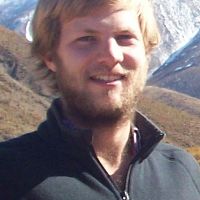Riebe et al., 2017
Controls on deep critical zone architecture: a historical review and four testable hypotheses
Riebe, C. S., Hahm, W. J., Brantley, S. L. (2017)
Earth Surface Processes and Landforms, 42 (1): 128–156 Cross-CZO National
-
Sierra, INVESTIGATOR
-
Sierra, GRAD STUDENT
-
National, Eel, Luquillo, Shale Hills, INVESTIGATOR, COLLABORATOR
Abstract
The base of Earth's critical zone (CZ) is commonly shielded from study by many meters of overlying rock and regolith. Though deep CZ processes may seem far removed from the surface, they are vital in shaping it, preparing rock for infusion into the biosphere and breaking Earth materials down for transport across landscapes. This special issue highlights outstanding challenges and recent advances of deep CZ research in a series of articles that we introduce here in the context of relevant literature dating back to the 1500s. Building on several contributions to the special issue, we highlight four exciting new hypotheses about factors that drive deep CZ weathering and thus influence the evolution of life-sustaining CZ architecture. These hypotheses have emerged from recently developed process-based models of subsurface phenomena including: fracturing related to subsurface stress fields; weathering related to drainage of bedrock under hydraulic head gradients; rock damage from frost cracking due to subsurface temperature gradients; and mineral reactions with reactive fluids in subsurface chemical potential gradients. The models predict distinct patterns of subsurface weathering and CZ thickness that can be compared with observations from drilling, sampling and geophysical imaging. We synthesize the four hypotheses into an overarching conceptual model of fracturing and weathering that occurs as Earth materials are exhumed to the surface across subsurface gradients in stress, hydraulic head, temperature, and chemical potential. We conclude with a call for a coordinated measurement campaign designed to comprehensively test the four hypotheses across a range of climatic, tectonic and geologic conditions.
Citation
Riebe, C. S., Hahm, W. J., Brantley, S. L. (2017): Controls on deep critical zone architecture: a historical review and four testable hypotheses. Earth Surface Processes and Landforms, 42 (1): 128–156. DOI: 10.1002/esp.4052
 This Paper/Book acknowledges NSF CZO grant support.
This Paper/Book acknowledges NSF CZO grant support.
Explore Further




